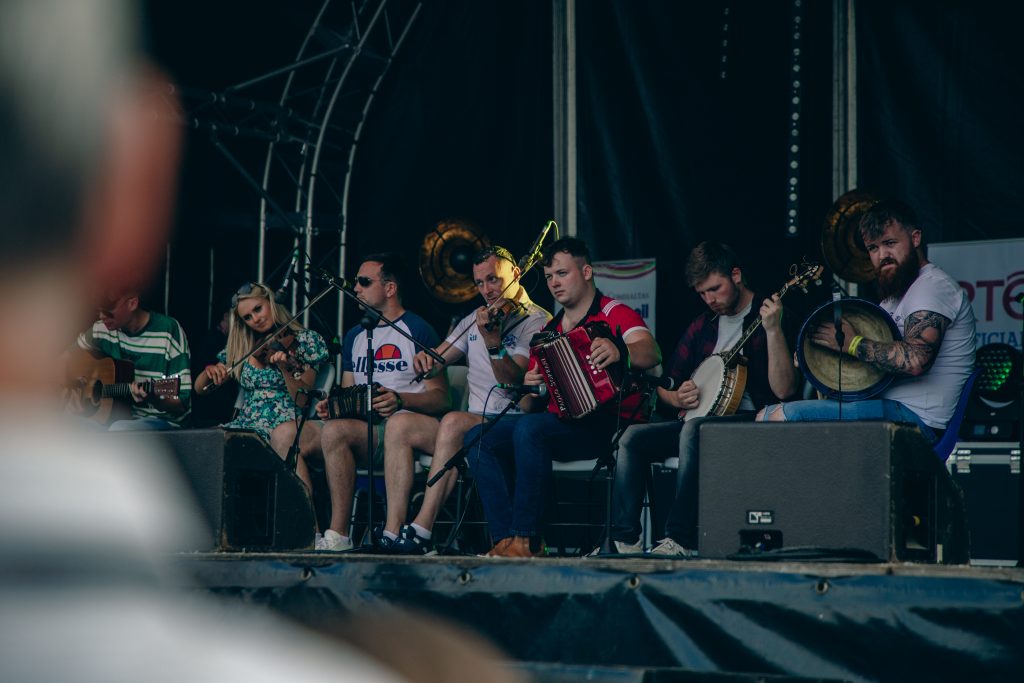
Reels, Jigs, Slip Jigs, Hornpipes & Polkas Explained
When you’re first introduced to the world of traditional Irish music, it can feel like stepping into another dimension and can be quite overwhelming. With so many different types of tunes flying around in a session (each with their own patterns and quirks), it’s easy to get a little lost.
Not to worry, though! As today, we’re going to focus on five of the most important and commonly played types of Irish tunes: reels, jigs, slip jigs, hornpipes, and polkas. These five are the fundamentals of the tradition, and understanding their feel will deepen your connection to the music, whether you’re playing or simply listening.
Note: There are more than these five tune types in Irish music, like slides, waltzes, flings, slow airs, barndances, marches, and more, but today I thought I’d focus on the core types of tunes found in traditional Irish music to start.
Reels
Let’s start with the most common tune type in Irish traditional music. Reels.
Reels are written in 4/4 time and are played at a quick, lively pace, making them a favourite at sessions. They are known for their driving, straight rhythm and are often the backbone of many dance sets.
A helpful way to get a feel for their rhythm is by repeating the phrase “Black and Decker” in time with the music because it should fit with every phrase of the melody. It’s a catchy little mnemonic that fits the timing perfectly (and helped me get a feel for the tunes in the beginning as well).
Two iconic examples are The Reconciliation Reel and The Ships Are Sailing, both of which offer a perfect introduction to the energy and momentum that reels bring to a tune set.
Jigs
Next up are perhaps the most quintessentially Irish-sounding tune type, jigs.
Jigs are written in 6/8 time, giving them a natural triplet feel that creates a bouncy, rolling rhythm. They’re just as fast-paced as reels, but their feel is entirely different. Instead of straight time, you’ll hear a lilt that’s perfect for dancing. A classic trick to internalise the jig rhythm is to say “clippity cloppity” alongside the melody is a similar fashion..
Famous jigs like The Kesh Jig and Morrison’s Jig are beloved both for their infectious rhythm and their accessibility to learners and dancers alike.
Slip Jigs
A little less common, but no less enchanting, slip jigs take the triplet rhythm of the jig and stretch it further.
Played in 9/8 time, they have an extra beat per bar, giving them a lilting, graceful flow that feels different to the conventional jig. Though they may be slightly more niche in session settings, slip jigs have their place. A good way to grasp their rhythm is with the phrase “rashers and sausages, sausages”.
One of the most famous examples is The Rocky Road to Dublin, a tune that perfectly captures the fluid motion and intricate timing of the slip jig form.
Hornpipes
Hornpipes are a bit of an outlier when compared to the previous three. They’re written in 4/4 time, like reels, but played more slowly and with a distinctive swung or dotted rhythm. This gives them a bouncy, jovial feel (often described as playful or even cheeky). Hornpipes are great fun to play and have a charm that’s all their own.
Off to California and King of the Fairies are two classic hornpipes that showcase the tune type’s syncopated swagger.
Polkas
Finally, we come to polkas. One of the most unique types of Irish tunes, polkas are almost exclusively associated with the Sliabh Luachra region of southern Ireland (on the border of Cork, Kerry and Limerick), where they hold a special place in the local tradition.
Unlike the other tunes discussed, polkas are written in 2/4 time and have a bright, punchy feel that’s hard to miss. They’re typically shorter than other tune types and have a driving rhythm that’s both easy to count and dance to. They are usually counted by using “One-and, Two-and” as a rhythmic guide.
Popular examples include John Ryan’s Polka and The Britches Full of Stitches, both favourites in beginner and advanced sessions alike.
Tune Structure: A Quick Note
Before we finish, it’s worth noting that most Irish tunes are structured in two main parts, usually referred to as the A section and the B section. Each section typically lasts 8 bars and is played twice, giving you a common overall structure of AABB. Recognising this structure will help you follow along more confidently at sessions and pick up tunes more quickly by ear.
Note: the structure of the tune isn’t always AABB. It can also be ABAB or ABCB or any combination, so it’s important to know the structure beforehand if you decide to play at a session!
Bringing It All Together
These five tune types form the rhythmic heart of Irish traditional music. They each offer something different, from the relentless drive of a reel to the springy joy of a hornpipe or the regional bounce of a polka.
Learning to distinguish them by feel, rhythm, and structure will deepen your understanding , help you learn new tunes quicker, and bring new life to your playing.
So next time you sit down to practise (or tune in to a good session), see if you can spot the rhythmic patterns using the phrases I gave you. Is it “Black and Decker”? “Clippity cloppity”? “Rashers and sausages”? Each one carries its own character, and once you start to recognise them, the whole world of Irish music begins to unfold in a brand new way.
Don’t worry if you can’t tell the differences right away. Make a playlist for each type and listen when you can, and eventually you’ll develop your ear.
Each one carries its own character, and once you start to recognise them, the whole world of Irish music begins to unfold in a brand new way.
If you want more tunes to listen to each week, be sure to sign up to our newsletter and get our customer-favourite “Five Tune Friday” emails!





Share your thoughts
Thanks soooo much for this now I might be able to guess more accurately now I'm going to learn my "Sea Shantie Songs" Thank you soooo much!!!
Great information and examples. Thanks so much. But was just wondering, isn't the Rocky Road to Dublin in 12/8?
Although it can sometimes feel like it's in 12/8, generally, notation for the tune is in 9/8. You can dig into it a bit on The Session here - https://thesession.org/tunes/593. It's a great little slip jig!
And there is the sixth type of Irish traditional music, the beautiful and often haunting Slow Airs.
Slow airs are a great one, too. We'll have to dive deeper into those sometime soon.
Love it, greetings from Hoorn, The Netherlands
Hiya, Tom! Thanks for reading, glad you enjoyed.